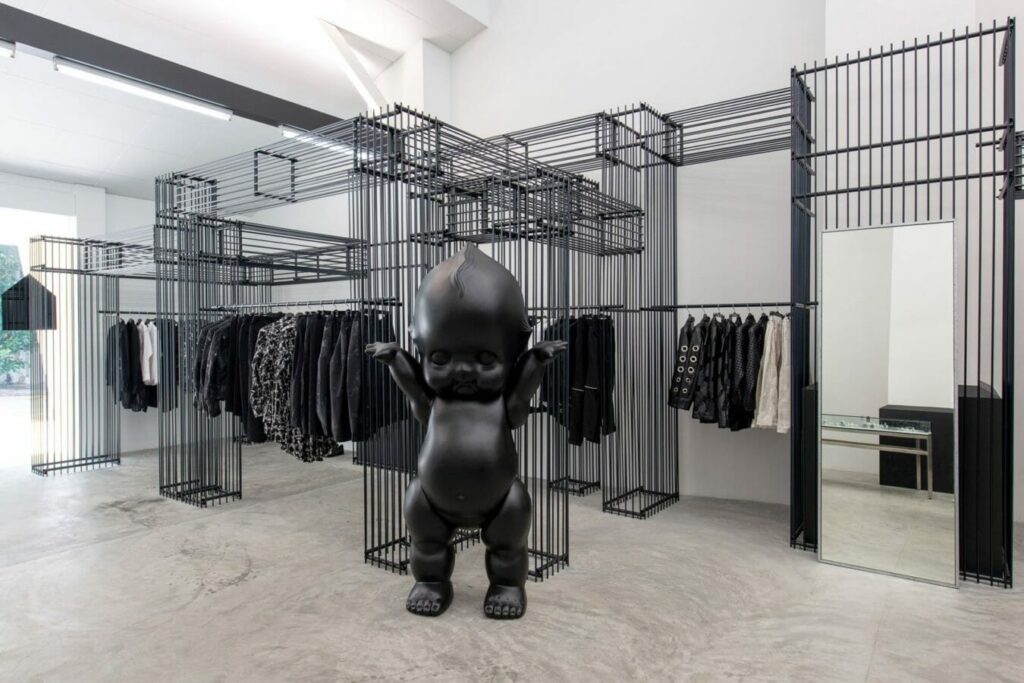By Fernanda Tapia
When discussing groundbreaking figures in the world of fashion, Rei Kawakubo, the genius behind Comme des Garçons, is a name that instantly comes to mind. Renowned for her avant-garde and anti-fashion approach, she’s challenged conventional norms of style, shifting the focus from mere practicality and trends to profound conceptual explorations of beauty, luxury, and the human body.
Yet what many may not realize is that Kawakubo’s visionary approach didn’t remain confined to the realms of haute couture or avant-garde runways. It found a unique expression in the retail world, courtesy of her and her husband’s Adrian Joffe brainchild, Dover Street Market, an emblem of avant-garde fashion and streetwear retail.
At its core, Dover Street Market isn’t just a store; it’s a creative marketplace. Inspired by the bustling spirit of the Kensington Market, Kawakubo and Joffe envisioned a shopping environment that mirrored the excitement of discovering unexpected treasures. It all began in 2004 on Dover Street in Mayfair, a location it retained when moving to its current Soho address in 2016, which happens to be the former headquarters of Burberry, dating back to 1912.
From the beginning, this approach set it apart through its commitment to offering an extensive range of brands, going beyond the Comme des Garçons universe. From iconic fashion houses like Gucci, Prada, Loewe, and Miu Miu to emerging talents such as Kiko Kostadinov and Molly Goddard, Dover Street Market is a canvas for creative diversity.
However, Dover Street Market isn’t your typical luxury department store either. It defies categorization, serving not only as a shopping haven but also as an immersive fashion-meets-art exhibition space. Each featured designer meticulously curates their display, inviting shoppers to engage with their creations in a holistic and profound manner that transcends mere material acquisition.
Regarded as a pioneer in the concept store realm, it reshaped and keeps reshaping the traditional idea of a physical retail space. It seamlessly merges high fashion and streetwear, weaving clothing and art installations into an intricate tapestry. It’s more than just a place to shop; it’s a dynamic canvas where designers craft their unique retail environments, ensuring that the store feels like an ever-evolving art installation. Twice a year, the store closes its doors to be reborn, in harmony with the changing seasons, and Kawakubo affectionately describes the result as a “beautiful chaos.”
After an illustrious launch in London, Dover Street Market embarked on a global journey, with a distinct focus on Asia, reflecting Comme des Garçons’ deep-rooted connection to Japan. Tokyo, where Kawakubo hails from, became the first international destination in 2012, specifically in the Ginza shopping district, followed by New York City, Singapore, Beijing, Los Angeles, and Paris in subsequent years. Dover Street Market’s global footprint reflects its success in redefining the boundaries of fashion retail.
Furthermore, it has become a key player in the streetwear scene, championing brands like Stüssy, Nike, and Palace. A pioneer in merging streetwear and high fashion together, Kawakubo and Joffe’s store have tapped and integrated a community at large, with the London store becoming a go-to hangout spot for fashion students and customers chatting with staff, and Tokyo’s space taking over a traditional old-school commercial area. Hence, it has evolved from being a fashion destination to a hub for culture. Events like Marc Jacobs’ Heaven launch party and the legendary archive sale in London, where shoppers queue for over four hours to get their hands on discounted archival pieces, are testimony to Dover Street Market’s role as more than just a store. It’s a gathering place for fashion enthusiasts and a true cultural phenomenon.



